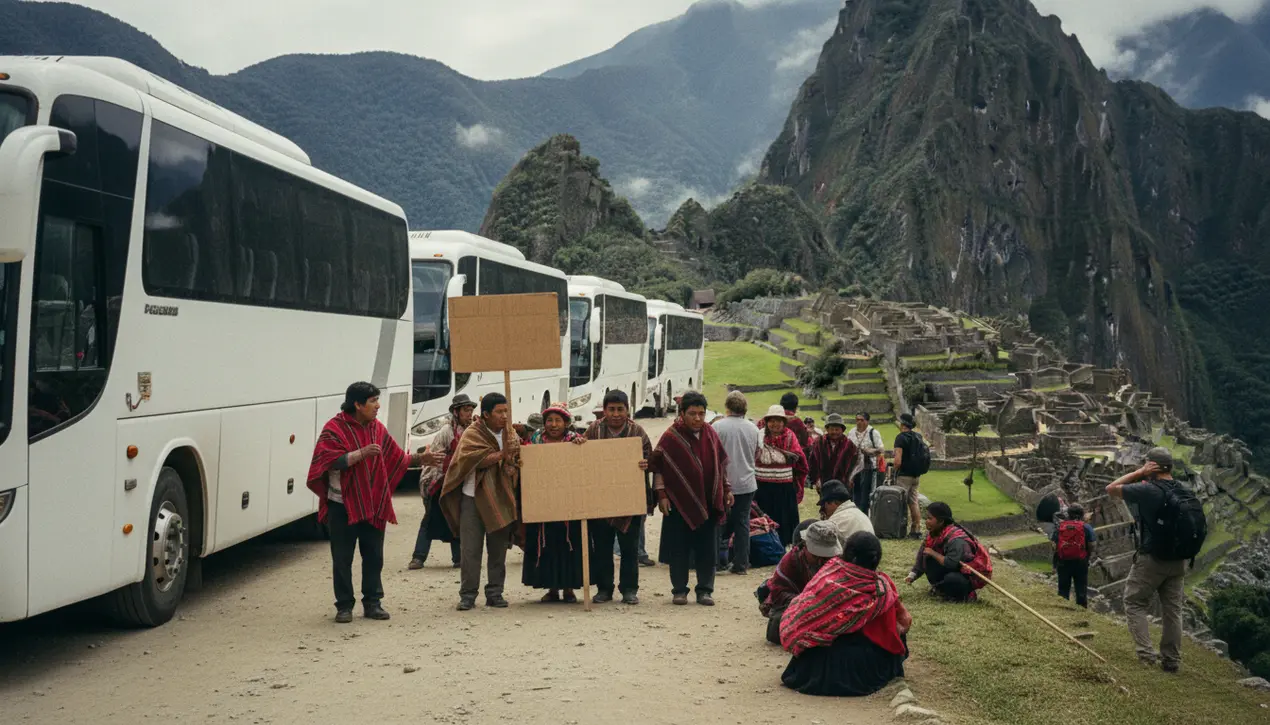
Othertravel & tourismSustainable Tourism
Tourist Bus Protests at Peru's Machu Picchu Site
EM
Emma Wilson
19 hours ago7 min read2 comments
The ancient stone terraces of Machu Picchu, Peru's crown jewel and a UNESCO World Heritage site that typically echoes only with the whispers of awe-struck tourists and the mountain wind, have become the unlikely stage for a modern-day protest, as local demonstrators have mobilized against the coach services that ferry visitors up the treacherous, winding road to the citadel's gates. This isn't merely a dispute over transportation; it's a raw, emotional confrontation over the soul of a sacred place, pitting economic survival against cultural preservation and environmental integrity.The protests, which saw vehicles blockaded and routes impassable, stem from a deep-seated frustration among residents of the nearby town of Aguas Calientes, who feel increasingly marginalized by the centralized control and revenue distribution of the bus concession, a monopoly held by a single company. For decades, these coaches have been the primary artery for the over one million annual visitors who make the pilgrimage to the 15th-century Inca ruins, a system born from necessity to protect the fragile Inca Trail from excessive foot traffic, yet one that has created its own set of intractable problems.The core of the conflict lies in the stark disparity between the immense profits generated by tourism—Peru's third-largest source of foreign currency—and the tangible benefits trickling down to the local communities who are the site's most immediate custodians. Protesters argue that the high cost of the bus tickets, a significant expense for any traveler, enriches a distant corporate entity while the local populace contends with inflation, crowded infrastructure, and the environmental degradation of their ancestral lands.This tension mirrors a global crisis playing out at heritage sites from Venice to Angkor Wat, where the very act of celebrating a location's uniqueness threatens to destroy it through the sheer weight of its own popularity. The situation at Machu Picchu is further inflamed by the lingering economic scars of the COVID-19 pandemic, which brought tourism to a catastrophic halt for nearly two years, a period that laid bare the precariousness of a single-industry economy and hardened local resolve to secure a more equitable stake in the recovery.Experts watching the situation warn that these disruptions are a symptom of a deeper malaise; unchecked visitor numbers, which Peru has attempted to manage through timed entry tickets and capped daily admissions, are still pushing the site beyond its carrying capacity. The constant rumble of diesel engines on the Hiram Bingham Highway contributes to erosion and air pollution in the delicate cloud forest ecosystem, a slow-motion insult to an archaeological marvel that has withstood centuries.As the Peruvian government scrambles to mediate, the protests serve as a urgent, real-time case study in the complex calculus of sustainable tourism, forcing a difficult conversation about whether Machu Picchu is primarily a global treasure to be consumed or a living cultural landscape for which local Peruvians must have both a voice and a vested interest. The outcome of this standoff will set a critical precedent, not just for the future of this iconic citadel, but for the preservation of our world's most vulnerable heritage sites, where the path forward must be paved with more than just good intentions and tourist dollars.
#Machu Picchu
#Peru
#tourist buses
#protests
#UNESCO World Heritage
#featured
Stay Informed. Act Smarter.
Get weekly highlights, major headlines, and expert insights — then put your knowledge to work in our live prediction markets.
Comments
Loading comments...
© 2025 Outpoll Service LTD. All rights reserved.